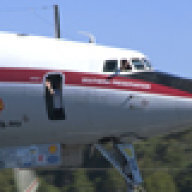OK, just read through the AIP on radio calls and can concur with...
The following are the only extra bits of relevance to RA pilots.
21.1.9 Aircraft may maintain a listening watch on other than the Area VHF for operations below 5,000FT in Class G airspace such as para‐ chuting, gliding, agricultural operations and circuit training or local flights at non‐controlled aerodromes.
21.1.12 The standard broadcast format is;
a. {Location} Traffic
b. {Aircraft type}
c. {Callsign}
d. {Position/intentions}
e. {Location}
21.2.2 A non‐radio aircraft operating in Class G airspace may, due to stress of weather, operate above 5,000FT to the minimum extent necessary for the safe conduct of the flight, provided:
a. the aircraft cruises at a VFR level;
b. the cruise is conducted in VMC; and
c. as soon as is practicable, the aircraft descends in VMC to
below 5,000FT to continue flight in VMC.
A pilot not able to comply with these requirements must proceed to the nearest suitable aerodrome and land.
21.2.3 A no‐radio aircraft, other than a glider, may operate above 5,000FT within the confines of a published Danger area which is:
a. promulgated specifically for no‐radio operations, or
b. identified as permitting no‐radio operations.
Apart from that, if you are going to fly above 5000 ft, once that general allowance has come into affect, you must have a VHF radio in the aircraft and be licensed/certified to use it. And you must maintain a listening watch on the appropriate frequencies as listed in ERSA and/or charts such as VTC, ERC-L, etc.
Of course, for a lot of us operating from existing CTAF's, that is probably already the case or will be after June 3rd.
Well, at least, this is the way I interpret it anyway!






